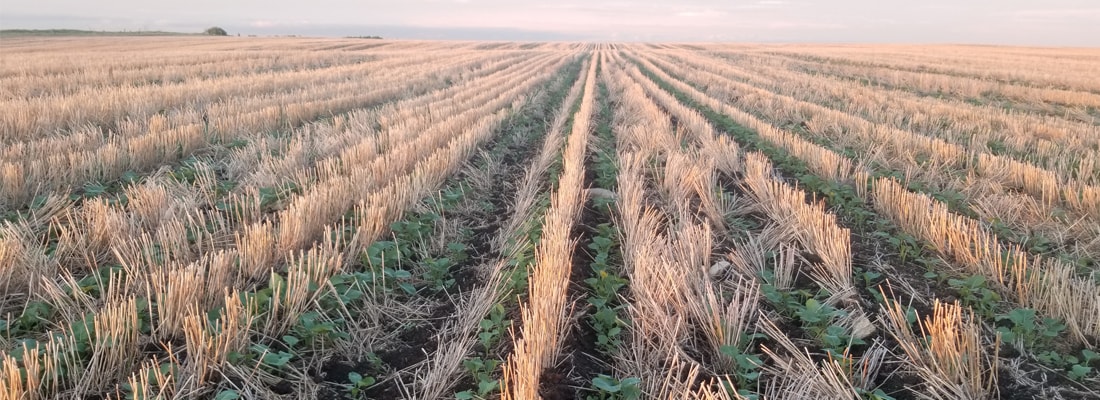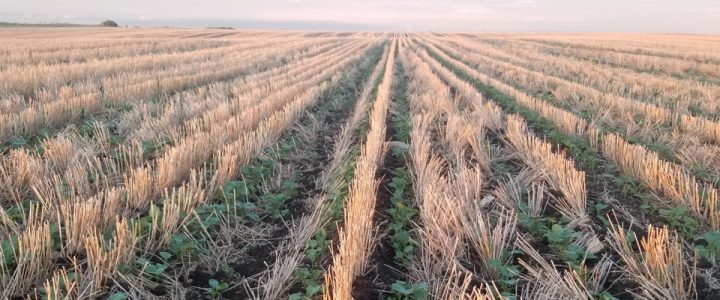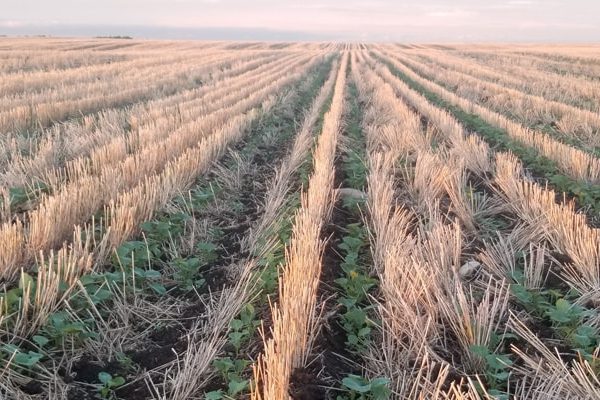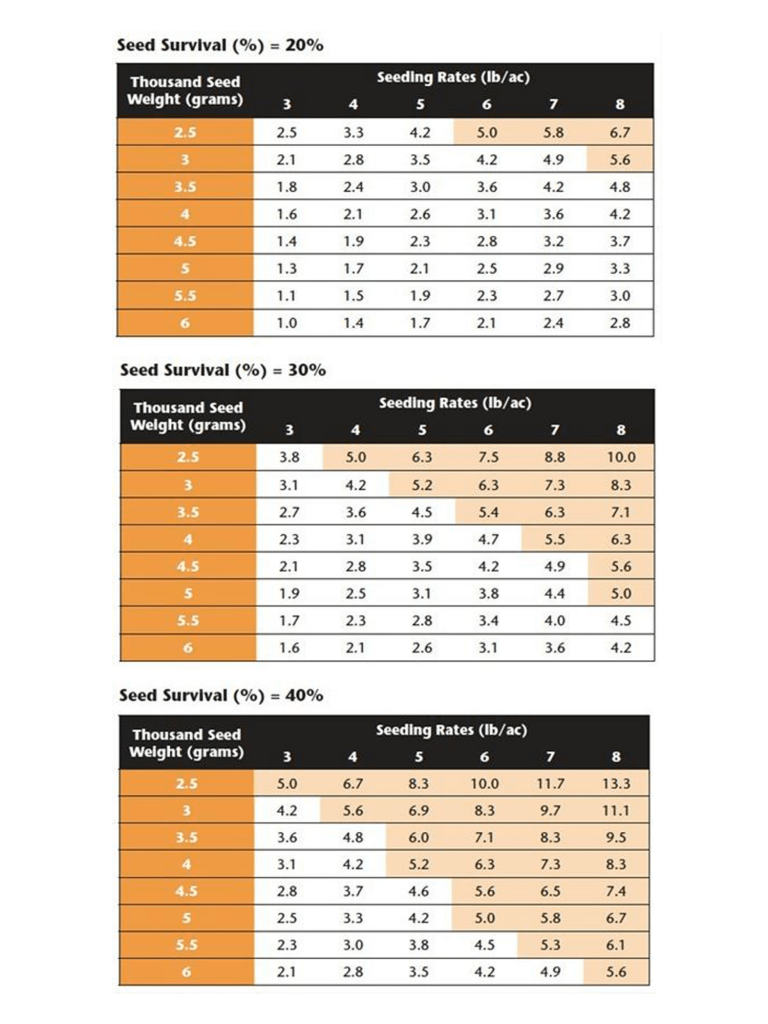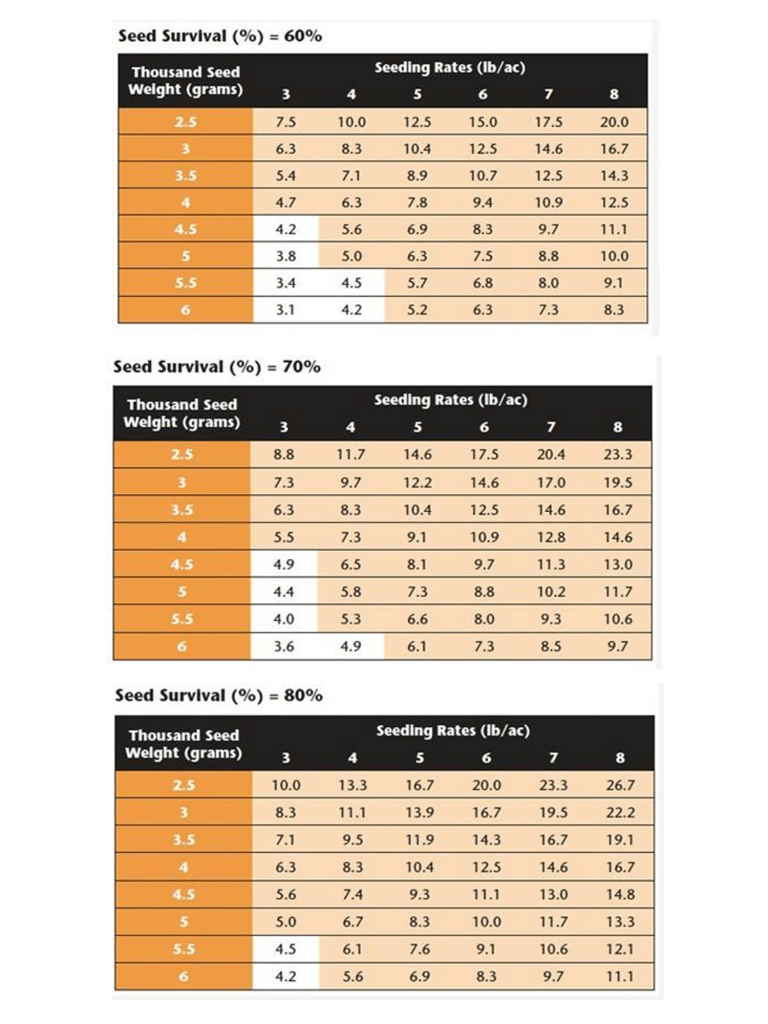Seed is a major investment and choosing the right seeding rate will impact the plant population in a canola field for the rest of the season. Factors such as thousand seed weightThe weight (in grams) of 1,000 canola seeds from one seed lot. More, target plant density and estimated emergence can help determine a recommended seeding rate, which can lead to good stand establishment.
Important tips for seeding rate management
- Seeding rates should be adequate to achieve 50-80 plants per square metre (approximately five to eight plants per square foot). Yield potential tends to drop off with fewer than 30-40 plants per square metre (three to four plants per square foot).
- Seeding rates should be adjusted based on target plant density (desired plants per square foot or per square metre) thousand seed weightThe weight (in grams) of 1,000 canola seeds from one seed lot. More (TSWThe weight (in grams) of 1,000 canola seeds from one seed lot. More) and estimated percent emergence. This will ensure that target plant populations can be achieved.
- Factors such as soil moisture, soil temperature, fertilizer toxicity, seeding speed, seeding depth, seed placement, seed-to-soil contact, seed vigor, seedling disease and dormancy can affect germination and emergence.
Choosing a seeding rate
Seeding rates should be set to produce a target plant density of 50-80 plants per square metre (five to eight plants per square foot). Yield potential tends to drop off with fewer than 30-40 plants per square metre (three to four plants per square foot), so a stand of five to eight plants per square foot will allow for some plant mortality during the growing season 1,2,3. Canola crops may occasionally reach their yield potential with as little as 10-20 plants per square metre (one to two plants per square foot) but the risk of yield loss or crop failure increases considerably when plant densities drop below 30-40 plants per square metre (approximately three to four plants per square foot) 4,2.
Seeding rates can be calculated by considering target plant density (plants per square metre or plants per square foot), seed weight (TSWThe weight (in grams) of 1,000 canola seeds from one seed lot. More) and estimated emergence (percentage). The seeding rate calculator at www.canolacalculator.ca uses the following equation:

Use the Canola Calculator to determine seeding rate
Seed size will affect seeding rate
Seed size becomes a key factor in yield potential when the number of seeds planted is not sufficient to provide a plant stand within this desired range 5. For example, if seed weighs six grams per 1,000 seeds (six gram TSWThe weight (in grams) of 1,000 canola seeds from one seed lot. More) and a grower seeds at four pounds per acre (1,800 grams per acre), they will only be planting 60 seeds per square metre (approximately six seeds per square foot). At 50 per cent emergence (which is common) the stand will have only 30 plants per square metre (three plants per square foot), which is insufficient.
Setting a canola seeding rate without first considering the TSWThe weight (in grams) of 1,000 canola seeds from one seed lot. More means the variability in seed weights will not be accounted for, despite the considerable variability that can exist between seedlots. One pound or kilogram of seed with a high TSWThe weight (in grams) of 1,000 canola seeds from one seed lot. More will contain fewer individual seeds than that same pound or kilogram with a lower TSWThe weight (in grams) of 1,000 canola seeds from one seed lot. More. Current varieties of herbicide-tolerant canola can vary between 3.5 grams per thousand seeds to 6.5 or more grams per thousand seeds.
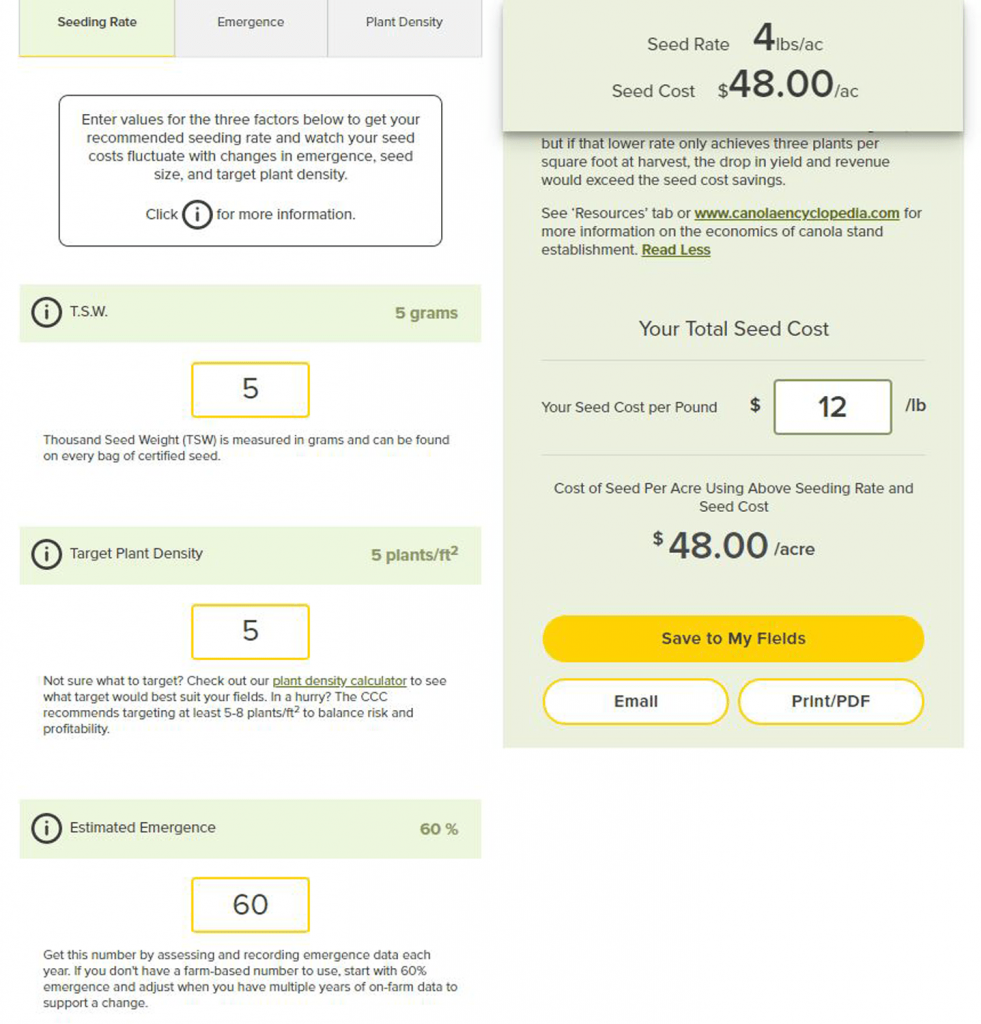
For example, a grower targeting six plants per square foot (approximately 60 plants per square metre) and expecting 60 per cent emergence would need to seed 5.8 pounds per acre to achieve their target density with a six gram TSWThe weight (in grams) of 1,000 canola seeds from one seed lot. More seedlot. A grower with the same target density and expected emergence that had a four gram TSWThe weight (in grams) of 1,000 canola seeds from one seed lot. More seedlot would only require a seeding rate of 3.8 pounds per acre to reach the same plant density of six plants per square foot.
If the TSWThe weight (in grams) of 1,000 canola seeds from one seed lot. More is six grams, the target plant population is five plants per square foot (approximately 50 plants per square metre), and estimated seed survival is 50 per cent, the seeding rate will be 5.8 pounds per acre (one pound per acre more than the previous example with a five gram TSWThe weight (in grams) of 1,000 canola seeds from one seed lot. More).
Assessing seeding rates
Try out Manitoba Agriculture’s Seeding Rate Calculator to see your seeding rates and other seeding parameters impact your profitability.
Follow up with plant counts after emergence to assess seeding rates and actual plant density and emergence.
Start looking for emerged seedlings at 10 to 14 days after seeding. At approximately 21 days after emergence, or when assessing a field for the timing of the first herbicide application, record plant populations from various location in the field. Doing this a few times per year and from year-to-year will provide a baseline for typical seedling survival on a farm with a grower’s specific seeding system. This information will be useful for setting seeding rates in the future, especially when trying to maximize efficiency of seed input investments without substantially increasing risk.
To learn more from these sites, mark them and go back again before harvest to see how many plants survived to maturity.
Seeding rate research
For canola seeding rate-related research, check out these studies:
- Canola plant establishment meta-analysis
- Seed size and seeding rate effects on canola yield and quality
- Optimal seeding rate based on seed size in canola
- Determining the optimum plant density in canola
- Getting more bang for your buzz: Does pollination compensate for canola yield lost under sub-optimal soil moisture, nitrogen fertilization and/or seeding rates?
- Economic profitability and sustainability of canola production systems in Western Canada
- Seeding between the lines: evaluating the potential of inter-row seeding for canola in southern Alberta
- Farm gate investigation of best management practices in canola establishment and production systems
- Impact of management and environment on canola establishment based on survey data
- Ultimate Canola Challenge (On-Farm Research)
Footnotes
- Harker, N.K., & Hartman, M.D. 2017. Nitrogen and seeding rate versus novel inputs for Western Canada canola production. Canadian Journal of Plant Science., 97, 32-43.[↩]
- Hartman, M. Unpublished[↩][↩]
- Kutcher, H.R., Turkington ,T. K., Clayton, G. W., & Harker, K. N. 2013. Response of herbicide-tolerant canola (Brassica napusAlso referred to as Argentine canola, it is the species of canola currently commonly grown in Canada. More L.) cultivarsCultivars are variants in a species developed through the intervention of humans (despite the term 'variety' often being incorrectly used to describe this). Cultivars can be open-pollinated type, hybrid, synthetic, composite, etc. More to four row spacings and three seeding rates in a no-tillA type of tillage management technique where soil is undisturbed from harvest through planting, seeding with narrow knives/hoes or discs. More production system. Canadian Journal of Plant Science., 93,1229-1236.[↩]
- Shirtliffe, S. & Hartman, M. 2009. Determining the economic plant density in canola.[↩]
- Canola Council of Canada. 2002. Canola stand manipulation trial.[↩]
